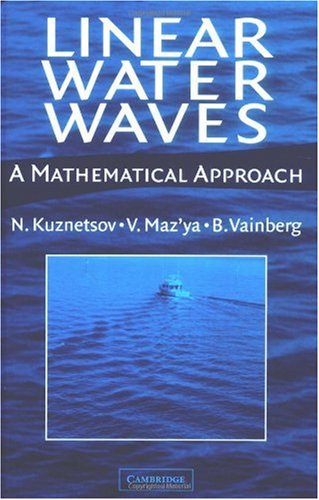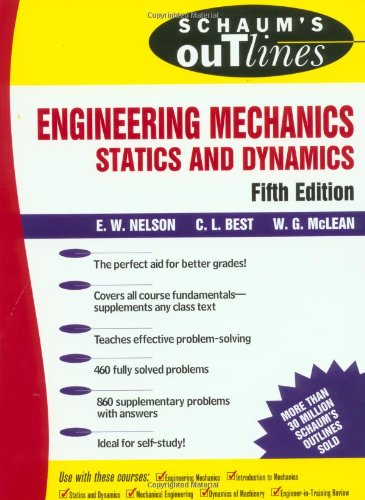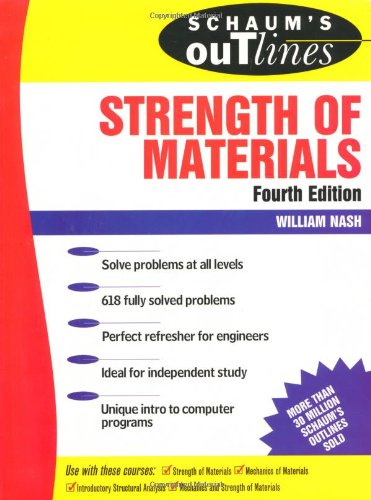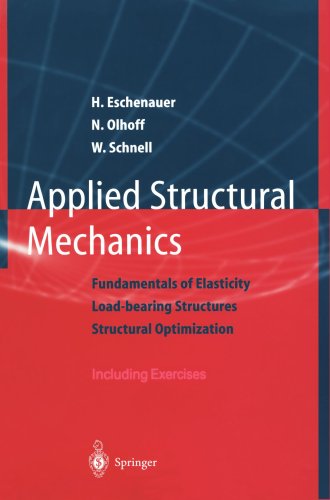N. Kuznetsov, V. Maz’ya, B. Vainberg0521808537, 9780521808538, 9780511041969
Table of contents :
0521808537……Page 1
Title……Page 5
Copyright……Page 6
Dedication……Page 7
Contents……Page 9
Preface……Page 13
Acknowledgments……Page 19
Conventions……Page 21
Equations of Motion and Boundary Conditions……Page 22
Energy and Its Flow……Page 24
Linearization: Its Applicability and Justification……Page 25
Equations for Small Amplitude Waves……Page 27
Boundary Condition on an Immersed Rigid Surface……Page 28
Separation of the t variable……Page 30
Examples……Page 31
Radiation Conditions……Page 33
Other Time-Harmonic Problems……Page 34
Separation of the t variable……Page 35
Conditions at Infinity Upstream and Downstream……Page 36
Other Problems for Ship Waves……Page 37
Part 1 Time-Harmonic Waves……Page 39
1.1.1. Point Source in Deep Water……Page 41
1.1.1.1. Green’s Function: The Boundary Value Problem and Explicit Representations……Page 42
1.1.1.2. Derivation of (1.6)……Page 44
1.1.1.3. Asymptotics at Infinity……Page 45
1.1.1.4. Asymptotic Behavior Near the Free Surface……Page 48
1.1.1.5. Uniqueness of Green’s Function……Page 50
1.1.1.6. Asymptotic Behavior for Small and Large Values of ν……Page 52
1.1.2.1. Explicit Representations for Green’s Function……Page 53
1.1.2.2. Properties of Green’s Function……Page 56
1.2.1. Two-Dimensional Green’s Functions……Page 57
1.2.2. Ring Sources and Their Potentials……Page 60
1.3.1. Green’s Decomposition……Page 62
1.3.2. Equivalence of Two Forms of the Radiation Condition……Page 65
1.3.3. Representation of a Bounded Potential in a Layer……Page 66
1.4. Bibliographical Notes……Page 68
2.1. Method of Integral Equations and Kochin’s Theorem……Page 70
2.1.1.1. Single-Layer Potential and the Corresponding Integral Equation……Page 71
2.1.1.2. Another Integral Equation……Page 74
2.1.2.1. Kochin’s Solvability Theorem……Page 75
2.1.2.2. Solvability of the Integral Equation When the Uniqueness Holds for the Water-Wave Problem……Page 77
2.1.2.3. Unique Solvability of the Water-Wave Problem……Page 78
2.1.3.1. Some Definitions and Auxiliary Results……Page 80
2.1.3.2. Fredholm’s Aternative for an Integral Equation on a Piecewise Smooth Contour……Page 81
2.1.3.3. Estimate for the Essential Norm……Page 82
2.1.3.4. Solvability of the Integral Equation on a Piecewise Smooth Contour……Page 85
2.1.3.5. Asymptotics of Solutions Near Corner Points……Page 86
2.2. Conditions of Uniqueness for All Frequencies……Page 87
2.2.1. On the Energy of Waves in the Homogeneous Problem……Page 88
2.2.2. Domain With Starlike Horizontal Cross Sections……Page 90
2.2.3.1. Derivation of the Integral Identity in Three Dimensions……Page 91
2.2.3.2. The Auxiliary Identity for an Axisymmetric Field and in Two Dimensions……Page 93
2.2.4.1. The Three-Dimensional Problem……Page 94
2.2.4.2. The Unique Solvability in Two Dimensions……Page 96
2.2.5.1. Two-Dimensional Examples……Page 98
2.2.5.2. A Three-Dimensional Example……Page 101
2.2.5.3. Strip of Variable Depth……Page 103
2.2.5.4. Layer of Variable Depth……Page 105
2.3.1. Theorem for a Submerged Body……Page 107
2.3.2.1. Statement of the Problem; Reduction to an Operator Equation……Page 108
2.3.2.2. Investigation of the Operator Equation……Page 110
2.3.3. Sources in a Layer of Variable Depth……Page 112
2.3.3.1. Statement of Boundary Value Problems for Sources……Page 113
2.3.3.2. Existence and Uniqueness of the Source Potentials……Page 114
2.3.3.3. The Two-Dimensional Case……Page 115
2.4. Bibliographical Notes……Page 116
3.1. Integral Equations for Surface-Piercing Bodies……Page 119
3.1.1. Integral Equation and Irregular Frequencies……Page 120
3.1.1.1. Application of the Invertibility Theorem……Page 121
3.1.1.2. Irregular Frequencies……Page 124
3.1.1.3. Uniquely Solvable System of Two Integral Equations……Page 127
3.1.2.1. Integral Equations Involving a Hypersingular Operator……Page 129
3.1.2.2. Integral Equations Involving the Free Surface……Page 132
3.1.2.3. Integral Equations Involving Modified Green’s Functions……Page 133
3.1.2.4. Null-Field Equations……Page 135
3.2.1. Theorem of John……Page 136
3.2.1.1. The Uniqueness Theorem for the Helmholtz Equation……Page 137
3.2.1.2. Investigation of the Simple Wave of Order Zero……Page 138
3.2.1.3. John’s Theorem on the Unique Solvability……Page 140
3.2.2. Extensions of John’s Uniqueness Conditions……Page 141
3.2.2.1. The Two-Dimensional Problem……Page 142
3.2.2.2. Some Examples……Page 145
3.2.2.3. A Pair of Symmetric Bodies Submerged in Deep Water……Page 146
3.2.2.4. The Axisymmetric Problem in Deep Water……Page 150
3.2.3. Further Uniqueness Results……Page 154
3.2.3.1. The Extended Auxiliary Integral Identity and Its Applications……Page 155
3.2.3.2. Two-Dimensional Domains of Sufficiently Small Depth……Page 158
3.3. Bibliographical Notes……Page 160
4 Semisubmerged Bodies, II……Page 162
4.1.1. Trapped Waves in Two Dimensions……Page 163
4.1.1.1. Construction of Trapping Geometries……Page 164
4.1.1.2. Proof of Stream Line Properties……Page 166
4.1.1.3. Properties of Nodal Lines……Page 171
4.1.1.4. Numerical Examples……Page 174
4.1.2.1. Trapping Velocity Potentials……Page 178
4.1.2.2. Numerical Calculation of Trapping Structures for n > 0……Page 182
4.2. Uniqueness Theorems……Page 184
4.2.1.1. Vertical Shells……Page 185
4.2.1.2. Vertical Barriers……Page 190
4.2.2.1. Water of Finite Depth……Page 192
4.2.2.2. Deep Water……Page 195
4.2.2.3. On the Significance of John’s Condition for Uniqueness……Page 196
4.2.3.1. Deep Water……Page 205
4.2.3.2. Comparison of the Uniqueness Results with Examples of Trapped Modes……Page 209
4.2.4.1. Upper Bound for the Uniqueness Interval: The Case of Deep Water……Page 212
4.2.4.2. Discussion of the Upper Bound (4.80)……Page 216
4.2.4.3. Further Results……Page 218
4.2.5.1. Deep Water……Page 225
4.2.5.2. Another Bound……Page 229
4.3. Bibliographical Notes……Page 232
5 Horizontally Periodic Trapped Waves……Page 234
5.1. Two Types of Trapped Modes……Page 235
5.1.1. Modes Trapped by Surfaces with Horizontal Generators……Page 236
5.1.2. Modes Trapped by Vertical Cylinders in Channels……Page 238
5.2. Edge Waves……Page 239
5.2.1. Edge Waves on a Sloping Beach……Page 240
5.2.2. Water Having Constant Depth at Infinity……Page 243
5.3. Trapped Modes Above Submerged Obstacles……Page 249
5.3.1. Trapped Waves Above Submerged Cylinders……Page 252
5.3.2. Bottom Obstacles: Uniqueness and Trapped Waves……Page 254
5.4. Waves in the Presence of Surface-Piercing Structures……Page 257
5.4.1.1. Uniqueness Below the Cutoff……Page 259
5.4.1.2. Uniqueness Above the Cutoff……Page 261
5.4.2.1. Construction of Non-Uniqueness Examples……Page 264
5.4.2.2. Numerical Results……Page 266
5.4.3. Non-Uniqueness for Small k……Page 272
5.5. Vertical Cylinders in Channels……Page 274
5.5.1. General Vertical Cylinders: Existence of Trapped Waves……Page 277
5.5.2.1. A Vertical Circular Cylinder……Page 278
5.5.2.2. A Thin Vertical Plate on the Midplane of the Channel……Page 280
5.5.2.4. Trapped Modes Near Vertical Periodic Coastlines……Page 281
Part 2 Ship Waves on Calm Water……Page 283
6.1. Three-Dimensional Problem of a Point Source in Deep Water……Page 285
6.1.1.1. Statement of the Problem……Page 286
6.1.1.2. Integral Representation of Green’s Function……Page 287
6.1.2.1. Derivation of (6.8)……Page 288
6.1.3.1. Convergence and Smoothness of Integrals………Page 291
6.1.3.2. Verification of the Laplace Equation and the Free Surface Boundary Condition……Page 294
6.1.4.1. Statement of the Result……Page 295
6.1.4.2. Estimate for the Remainder……Page 297
6.1.4.3. Properties of Coefficients in the Asymptotic Expansion (6.33)……Page 299
6.1.5. Uniqueness of Green’s Function……Page 300
6.2. Far-Field Behavior of the Three-Dimensional Green’s Function……Page 303
6.2.1. Formulation of the Results……Page 304
6.2.2. Reduction to an Oscillatory Integral……Page 310
6.2.3. Stationary Phase Method……Page 311
6.2.4. Estimates Outside of Kelvin’s Angle……Page 314
6.2.5. Asymptotic Behavior Inside Kelvin’s Angle……Page 315
6.2.6. Asymptotics Near the Boundary of Kelvin’s Angle……Page 317
6.2.7. Asymptotic Behavior Near the Source’s Track……Page 319
6.3.1.1. Boundary Value Problem and Derivation of Explicit Representations……Page 325
6.3.1.2. Properties of Green’s Function……Page 329
6.3.2. Line Source in Shallow Water……Page 331
6.3.2.1. Boundary Value Problem and Its Explicit Solution……Page 332
6.3.2.2. Properties of Green’s Function……Page 334
6.4. Bibliographical Notes……Page 335
7 The Neumann–Kelvin Problem for a Submerged Body……Page 338
7.1.1. Asymptotic Behavior of Solutions at Infinity……Page 339
7.1.2. Kochin’s Solvability Theorem……Page 340
7.1.3. On Uniqueness in the Neumann–Kelvin Problem……Page 344
7.1.4.1. Statement of the Problem; Green’s Function……Page 346
7.1.4.3. On Uniqueness in Problem II……Page 347
7.1.4.4. Existence Theorem for Problem II……Page 351
7.1.5.1. On Nontrivial Solutions of the Homogeneous Problem I……Page 352
7.1.5.2. Equivalence of Problem I to an Integral Equation……Page 353
7.1.5.3. Necessary and Sufficient Conditions for the Unique Solvability of Problem I……Page 354
7.1.6. Unconditional Theorem for a Circular Cylinder……Page 357
7.2.1.1. Statement of the Problem, Asymptotics at Infinity, and Uniqueness……Page 361
7.2.1.2. Problem II……Page 362
7.2.1.3. On the Unique Solvability of Problem I……Page 365
7.2.2. Submerged Body in the Supercritical Stream……Page 367
7.3. Wave Resistance……Page 369
7.3.1. Cylinder in Deep Water……Page 370
7.3.2. Cylinder in the Subcritical Stream……Page 372
7.4.1. Statement of the Problem and Auxiliary Results……Page 373
7.4.2. Solvability of the Problem……Page 376
7.5. Bibliographical Notes……Page 379
8 Two-Dimensional Problem for a Surface-Piercing Body……Page 381
8.1.1. Statement of the Problem……Page 382
8.1.1.1. The Main Set of Conditions……Page 383
8.1.1.3. Supplementary Conditions……Page 384
8.1.2. Asymptotic Behavior of a Potential at Infinity……Page 385
8.1.3. Statement of the Problem for the Stream Function……Page 388
8.1.4.1. Reduction of Problem I to an Integroalgebraic System……Page 390
8.1.4.2. The Solvability of Problem I……Page 393
8.1.5. On Uniqueness in Problem I……Page 398
8.1.6.2. On Uniqueness in Problem II……Page 401
8.1.6.3. Reduction of Problem II to an Integroalgebraic System……Page 405
8.1.6.4. Solvability of Problem II……Page 407
8.1.7.2. Uniqueness in Problem I……Page 410
8.2. Total Resistance to the Forward Motion……Page 413
8.2.1. Cylinder in Deep Water……Page 414
8.2.2. Cylinder in Shallow Water……Page 415
8.3. Other Supplementary Conditions……Page 416
8.3.1.1. The Case When the Cylinder’s Contour Forms Nonacute Angles With the Free Surface at the Bow and Stern Points……Page 417
8.3.2. Waveless Potential……Page 418
8.3.2.1. On the Unique Solvability of Problem L……Page 419
8.3.2.2. On the Spray Resistance of a Cylinder in the Waveless Forward Motion……Page 422
8.3.3.1. Statement of the Problem and Some Auxiliary Results……Page 423
8.3.3.2. On the Unique Solvability of Problem R……Page 424
8.4. Trapped Modes……Page 425
8.4.1. Trapped Modes in Problem R……Page 426
8.4.2. Trapped Modes in Problem S……Page 430
8.5. Cylinder in the Supercritical Stream……Page 431
8.5.1. Two Equivalent Statements of the Problem……Page 432
8.5.2. On the Uniqueness of the Solution……Page 433
8.5.3. On the Existence of the Solution……Page 434
8.6. Bibliographical Notes……Page 435
Part 3 Unsteady Waves……Page 439
9.1.1.1. Statement of the Initial-Boundary Value Problem……Page 441
9.1.1.2. Function Spaces……Page 442
9.1.2. Auxiliary Steady-State Problem……Page 443
9.2. Operator Equation for the Unsteady Problem……Page 445
9.3.1. Further Properties of the Operator K……Page 447
9.3.2. Existence of a Unique Weak Solution……Page 449
9.3.3. Regularity of Solution……Page 451
9.4. Bibliographical Notes……Page 452
10.1. Rapidly Stabilizing Surface Disturbances……Page 455
10.1.1. Objectives for the Application of Asymptotic Methods……Page 456
10.1.2. Rapidly Stabilizing Surface Pressure……Page 459
10.1.2.1. Formal Asymptotic Expansion……Page 460
10.1.2.2. Hydrodynamic Corollaries……Page 461
10.1.2.3. Justification of Asymptotics……Page 464
10.1.3.1. Asymptotics of the Velocity Potential and Hydrodynamic Characteristics……Page 467
10.1.3.2. Waves in a Layer of Constant Depth……Page 470
10.2.1.1. Statement of the Problem and a Formal Asymptotic Expansion……Page 473
10.2.1.2. Hydrodynamic Corollaries……Page 475
10.2.1.3. Justification of Asymptotics……Page 477
10.2.2. Source Having a Rapidly Stabilizing Strength……Page 479
10.3. High-Frequency Surface Pressure……Page 480
10.3.1.2. Formal Asymptotic Expansion……Page 481
10.3.2. Hydrodynamic Corollaries……Page 484
10.3.3. Waves in a Layer of Constant Depth……Page 485
10.3.4. Justification of the Asymptotic Expansion……Page 488
10.4. High-Frequency Underwater Disturbances……Page 494
10.4.1.2. Asymptotic Expansion……Page 495
10.4.1.3. Source in a Layer……Page 498
10.4.1.4. Asymptotics of Wave Characteristics……Page 499
10.4.2.1. Main Results……Page 500
10.4.2.2. Asymptotics for Energy, Force, and Moment……Page 501
10.5. Bibliographical Notes……Page 504
Bibliography……Page 505
Name Index……Page 525
Subject Index……Page 529







Reviews
There are no reviews yet.